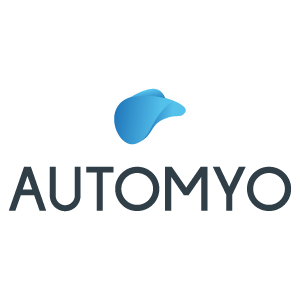
How to extract data from paper and automate business processes
Starting a digital transformation journey within a company means both implementing production processes, making them more agile, and automating operations, particularly manual ones, which in the administrative sphere take up so much time and resources, but above all, eliminating paper from processes.
What benefits can automation bring, and how is digitizing paper useful for increasing productivity and efficiency in companies and SMEs? We will look at this with two practical case studies.
Technologies and benefits supporting Digital Transformation: the contribution of Automyo and myBiros
From Customer Service to Onboarding, from Accounting to Finance, the impact of digitalization is now a reality. As Alessandro Niglio pointed out during the webinar held by Automyo in collaboration with myBiros, Italy is a bit behind on these issues.
The reason is quickly stated: the more than 4 million Italian SMEs, which have a reduced investment capacity compared to what a large enterprise can have, suffer in terms of productivity. The productivity of Italian SMEs, in fact, seems to be lower than the EU average, and our country has more difficulty in integrating what is human capital with new digital technologies.
The benefits of digitization and process automation
There are many reasons for this, ranging from the lack of awareness of how useful innovative software is in daily practice to the (few) digital skills present in our SMEs. Not only that, the digital solution offerings of large providers are very fragmented, and not always suited to the specific needs of a small or medium-sized enterprise.
However, one of the undeniable advantages of relying on specific technologies is that it reduces the risk of error, especially in those repetitive and complex activities that can bring risk or waste to the business; technologies that, at the same time, increase productivity and turnover.
Digitization and automation, moreover, push to enhance human capital by diverting it from “standard” and repetitive engagements to more strategic activities for the company.
Digital Transformation, then, is not simply the adoption of new technologies within the company but the willingness to transform the corporate culture within operating models and processes with a view to change management, especially for people.
How Automyo’s business automation works: the Claudio platform
Claudio is a no-code process automation product designed to improve the work experience of both companies (B2B) and their customers’ customers (B2B2B) by creating more efficient processes at a lower cost.
As Luca Adamo, CEO and Co-Founder of Automyo explained during the webinar, the Claudio platform makes it quick and easy to create automated workflows without writing code, putting technology at the service of people and business organization growth. In fact, according to data estimated by Gartner, by implementing process automation tools like Claudio, corporate finance departments can save up to 25,000 hours of rework caused by human error.
But how does Claudio work in practice?
Let’s take an example in sales. We know how important the first contact with a new lead is, and how repetitive the process behind it can be on the company side. Often, when a new email with a request for a quote arrives, we tend to put off responding after we have taken care of the day’s tasks, with the risk of forgetting this task and losing warm contact. For his part, not seeing an immediate response to his problem, the potential customer may desist by looking for competitors who will give him the immediate response he seeks.
Claudio can intervene in this very process: by automatically analyzing certain parameters such as the topic and text of an email, the platform can give the customer predefined information or request additional information in total autonomy, send forms to be filled out or send a quote directly. In fact, it is the company itself that determines when, how, and where to intervene within this automation process.
How does myBiros business automation work?
The goal of the myBiros API is to combine the power of artificial intelligence with human validation. In fact, the platform eliminates manual work to classify documents, thus saving time and reducing the need to pre-process and sort your incoming documents. The AI processes documents, autonomously identifying key information such as text or images, and transforming them into structured data.
A concrete example may be the digitization of documents in the back office environment. Companies often have to process hundreds of documents every day, often with different formats, handwritten or low-quality images. The myBiros platform steps in to automate the management of complex document flows, with 99 percent accuracy.
Learn how to use myBiros in back-office processes
An intuitive graphical interface with a fast set-up that can be used even without IT support, leveraging the most innovative deep learning techniques in document processing.
How Automyo and myBiros automation work together
Claudio and the myBiros tools can thus work together to speed up business processes and make the digital transition even easier.
On the one hand, myBiros enables extreme precision in the process of data extraction and paper digitization, even on low-quality documents. On the other, Automyo allows the scheduling of automated flows, making myBiros digitization more useful and even more effective.
A single process that creates a truly interconnected ecosystem to support companies and provide them with the right tools for digital growth.

